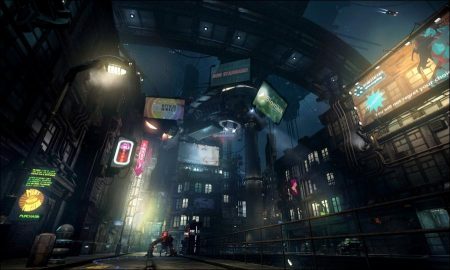Dystopia is not the product of a dream, fiction, science fiction. It is a literary warning tool for the dark future of the society in which it is part by step, which is inspired by the period it is in. It is no different from a lighting flare thrown into the sky on a pitch-dark battlefield, showing you where your enemy is waiting to attack you in the secluded corner.
From this point of view, dystopia becomes a profound criticism of the structure and progress of society. Despite its destructive appearance, dystopia, which has a very constructive criticism style, fulfills its duty of criticism by arguing that the dangers awaiting society after a very long time are the result of the actions that the society is currently implementing.
Utopia was first introduced by the British statesman, lawyer and writer Thomas More in 1516. This concept, which gives its name to the work it has written, means “non-place” or “good place. * * In Utopia, which is located in an island country, it describes how to create a better management and an ideal world order for the happiness of society. From this point of view, utopia takes its place in the literature as fictional texts representing an ideal but not really political, social life style.
Judging by the circle of influence, More laid the foundations of socialism with his work Utopia. But interestingly, in this work, our thinker has dreamed of a world close to ideal for his own citizens, but for the future of his community he exploits people outside the borders of the Island, uses economic power as a weapon to keep them under control, and buys the owners of power for his own people. he has never had any trouble getting others to fight. In this respect, the work seems to be a bedside book in which British politics, the father of imperialism, still drinks and reads during the sleepless nights.
Dystopia as the anti-utopia
Dystopia is a word mentioned for the first time in a parliamentary speech in 1868 by the British philosopher, political economist, parliamentary and civil servant John Stuart Mill. In his speech on economic-land issues, Mill argued that the impossibility of the aims of those who want to reach utopia within these issues and that these impossibilities would in fact be a dystopia. In other words, what he means by dystopia is a “bad place”. Thus, the term has entered the literature as an opposing utopia, although it does not use the term in the sense we currently use.
The emergence of dystopia as a genre in the literary scene coincided with the early 1900s. A writer in America, a country that is now considered the bastion of capitalism and at the time pursued economic development, writes for the first time a dystopian text. This author is none other than Jack London, whose life has been through difficulties and has eaten the silles of growing capitalism. Demir Ökçe, published in 1908, describing the oppression of the oligarchy on the working class and farmers, is the first example of the dystopian species.
Dystopian fire literally burns down when Yevgeny Zamyatin, who spent a long time in Russian prisons, wrote Biz, which criticized totalitarian regimes in 1920. Zamyatin, in 1924, this name was published in English with the name of the history of dystopia to engrave. This book, narrated through the diary of the D-503, which is connected to the beliefs of the totalitarian state, has been a very clear source of inspiration for its successors.
In 1932, Aldous Huxley’s Brave New World was published and the rise of dystopia accelerated. The breezes of Zamyatin’s science-fiction system with Us manifests itself from good to good. Huxley, with this novel in 632 after Ford under a single state management of people produced and classified in machines; art, religion, philosophy is prohibited, people relax by narrating a system that explains soma.
In 1949, the dystopia made its greatest leap in history. George Orwell’s 1984 novel, although inspired by Zamyatin’s Biz, has managed to take its place in the history of literature. This book describes a world order in which Big Brother sees and knows everything, rewrites and reproduces history even in time, and is in complete control of individuals.
Is dystopia a sub-genre of science fiction?
After this date, many authors have produced dystopian works. One of the most important of the genre is Ray Bradbury’s Fahrenheit 451, published in 1951. There is not much room for information and books in this world where a system which is kept alive thanks to the programs broadcasted on giant screens or the skill of the fire brigade.
Kurt Vonnegut said Otomatik I enjoyed the subject with pleasure from the brave New World, who played the subject with us. Otomatik Automatic Piano, which was written by Anthony Burgess while thinking of the future of British society, the pains of change and the deadly tumor in his own brain, Margaret Atwood ‘ ‘s story of women through fiction dystopia, master science fiction writer Ursula K. le Guin’ s utopian-dystopic work Mülksüzler dystopian literature is an important later works.
In recent works, dystopia continued to be treated as a sub-genre of science fiction. In fact, this intertwining, which may be odd at first sight, is nothing more than a perfect harmony between species. It is almost impossible not to take advantage of dystopia while imagining a future order, destruction, social structure and restless human psychology depending on technology. Especially in the apocalyptic-postapocalyptic science fiction, where the technology makes the ceiling but the quality of life decreases, the presence of dystopia is felt from the ground up. For science fiction works, which describe destruction and re-existence, the dystopia has a very strong connection with society both politically, sociologically and psychologically.
It is worth mentioning that the popular cinema productions that contain dystopian elements are among the cyberpunk and apocalyptic-postapocalyptic works. Are Dick’s Androids Electric Sheep Dreams? (Knife Ridge), Minority Report, Call to Truth, Suzanne Collins’s The Hunger Games series, Isaac Asimov’s I Robot, Richard Matheson’s I Am Legend are examples of these works.
Views: 273




